Projects
What I've Done - Publications
Contents of Projects that I've Done
Classification of RR Lyrae Variable Stars
Machine Learning | Time-domain | PostgreSQL | Scikit-Learn | Fourier Series | Big DataHyperpartisan News Classification
Natural Language Processing | Convolutional Neural Networks | Data Augmentation | PytorchSearch for Globular Clusters around Dwarf Galaxies
Kernel Density Estimation | Bayesian Analysis | Statistical Modeling | PostgreSQL | Big DataSupermassive Black Holes in Cosmological Simulations
Computational astrophysics | MPIScaling Relations between Supermassive Black Holes and Galaxies
Statistical Modeling | Big Data | Computational astrophysicsNumerically Solving the Schrodinger Equation
Computational astrophysics | MPIStructure of the Universe with Quantum Wave Dark Matter
Data Analysis | computational astrophysics

Classification of RR Lyrae Variable Stars with Machine Learning
Apr 2020 – Present: PhD Research ProjectAs a type of variable stars, RR Lyrae variables have a unique period range and magnitude range, which makes it a useful tool in astrophysics. Utilizing the billion-source time-domain ZTF sky survey, we created a hundred-billion-source training set selected by their color. For the sources in the training set, we fit their light curves using the Fourier series with the minimum chi-square to obtain features of the sources. Using these features, we trained a baseline model with random forest to classify RR Lyrae stars with an accuracy of 70%.
Hyperpartisan News Classification with Convolutional Neural Networks
Feb 2019 – May 2019: CMU 10707 Deep LearningSystematic targeting of hyperpartisan news can be used for propagandistic purposes. We utilize the SemEval 2019 competition and use the winning entry with a validation accuracy of 81% as our baseline model. We improve the model to the accuracy of 85% by (1) using ELMo to achieve sentence-level embeddings, (2) augmenting the dataset in English via back-translation of French and German using the Transformer models, (3) using CNNs hierarchically to get document-level representations from sentence-level representations. Click for the final report.
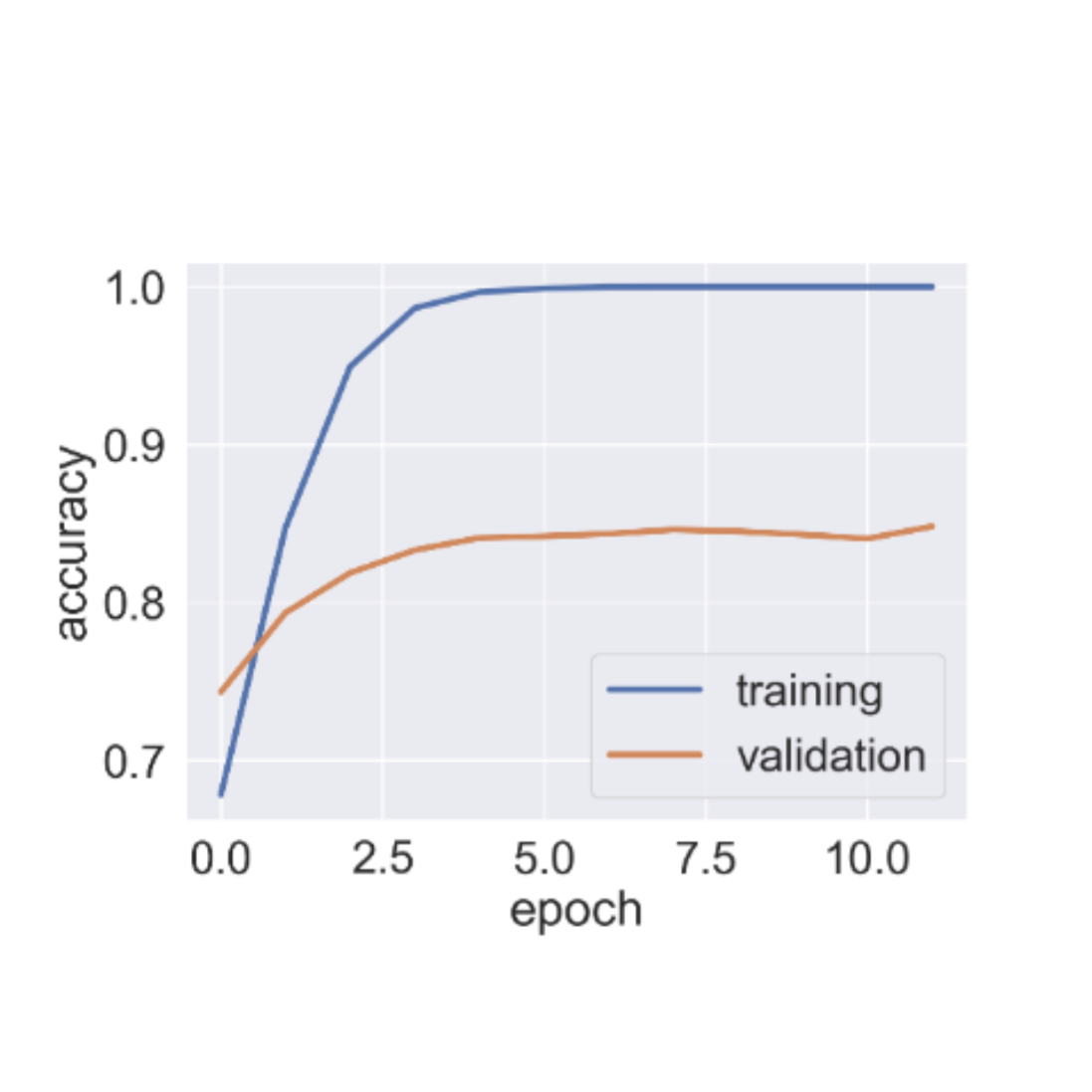
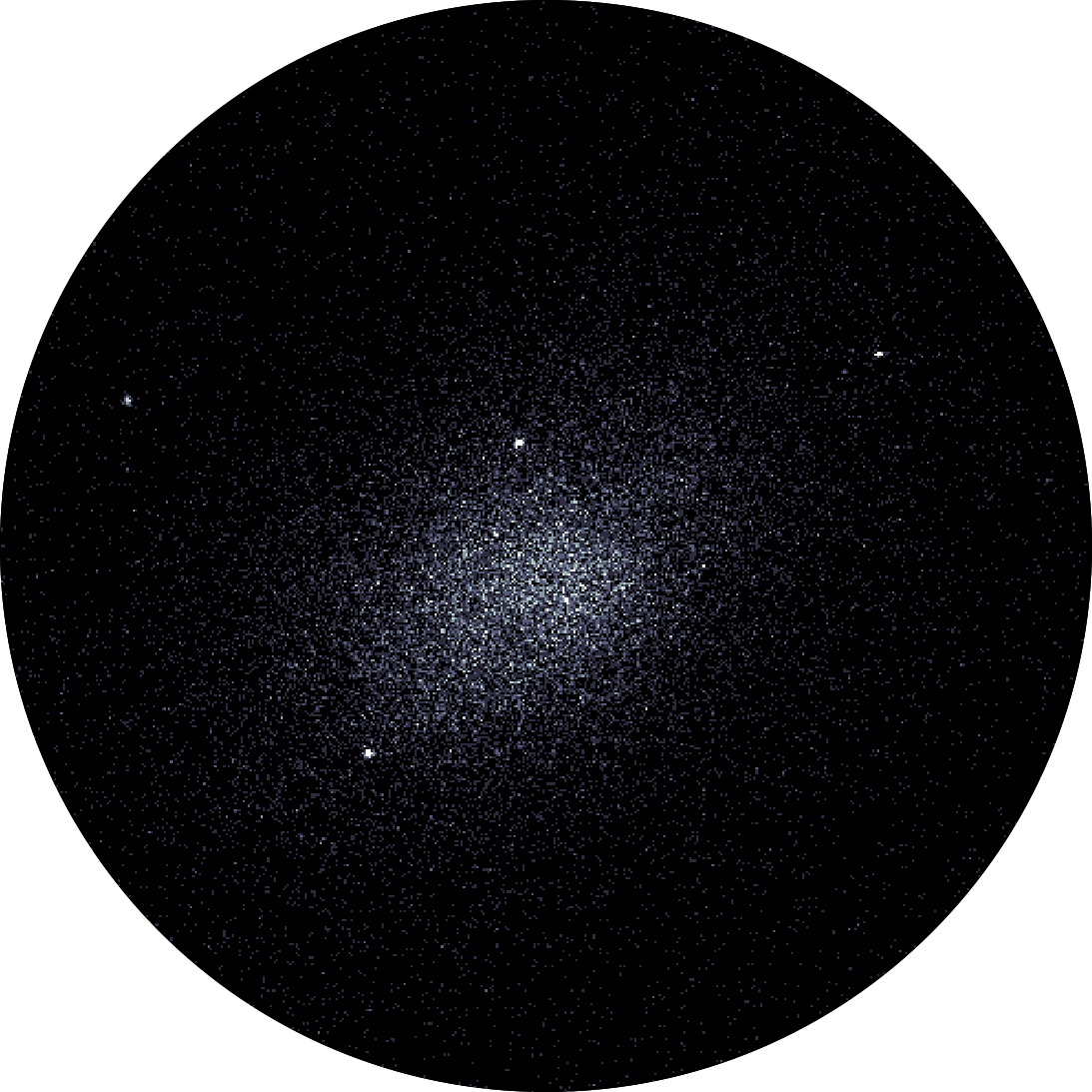
Search for Globular Clusters around Dwarf Galaxies using Kernel Density Estimation
Sep 2018 – May 2020: PhD Research ProjectGlobular clusters are bright, old, and compact astronomical objects, whose formation remains mysterious. Until very recently, there have been globular clusters still being found. To systemically search them utilizing the billion-source whole-sky GAIA mission, we targeted the most likely areas they might be lurking: around the dwarf galaxies. These areas are also the hardest to search through the traditional imaging investigation because they are bright. We identify candidates with kernel density estimation of the stellar number counts and model their specific frequency using Bayesian analysis and provide 90% credible intervals. Click to see the journal paper [4].
Supermassive Black Holes in Constrained Cosmological Hydrodynamic Simulations
Dec 2017 – Aug 2018: PhD Research ProjectStudying the growth of extremely supermassive black holes in traditional large volume simulations is prohibited due to the extremely computational cost. Instead, we utilize the constrained Gaussian realizations to increase local overdensity to induce a density peak that is dense enough to grow supermassive black holes in a small volume. This reduces the computational cost from billions to ten thousand CPU hours, making the investigation of supermassive black hole growth doable. We design 8 cosmological hydrodynamic simulations with different black hole scenarios to investigate the existing black hole seed mass range. Click to see the journal paper [3].
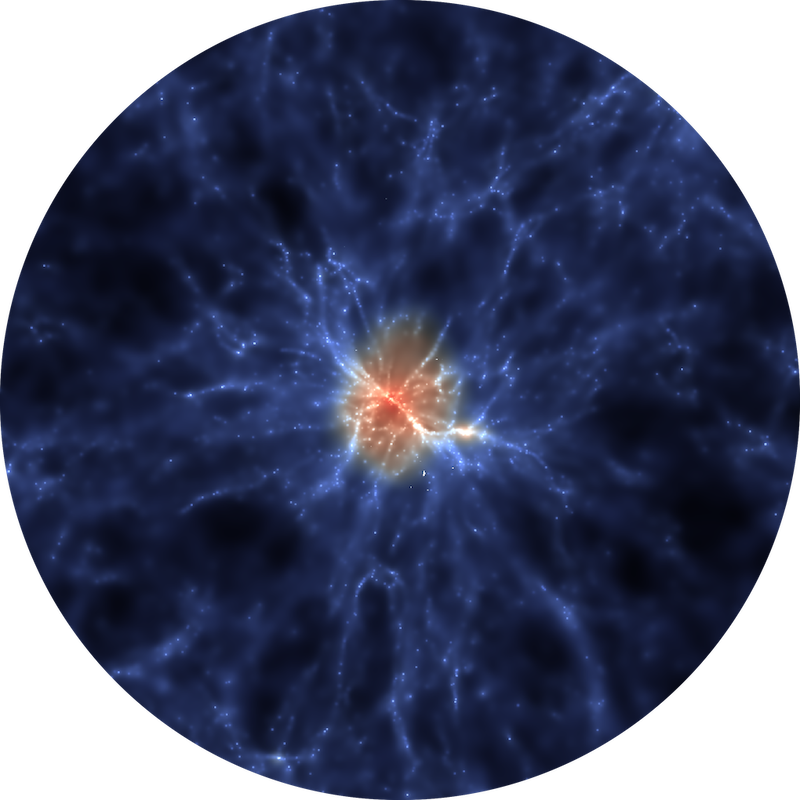
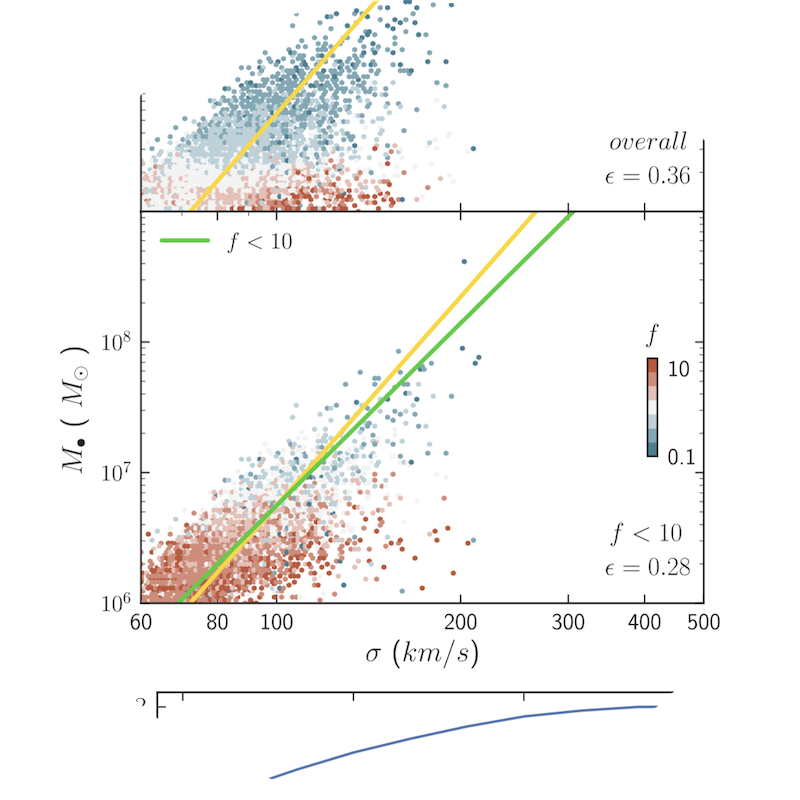
Scaling Relations between Supermassive Black Holes and Galaxies in the BlueTides Simulation
Jan 2017 – Dec 2017: PhD Research ProjectSupermassive black hole-galaxy relations have been proposed in low redshift. Due to their rareness and the observational obstacles. whether or not the relations hold in high redshift remains unknown. We analyze 5000 black holes and their host galaxies in the 700-billion-particle the BlueTides simulation and establish the scaling relations in high redshift which is consistent with the low-redshift observational results. However, the scatter of our relations are more scattered than the one from the observations. We investigate the properties of the black holes and galaxies, finding the gas fraction of galaxies highly correlated to the scatter of the galaxies from the relations. Click to see the journal paper [2].
Numerically Solving the Schrodinger Equation in Hydrodynamic Form
Aug 2015 – Jul 2016: MS ThesisThe interference property of quantum wave dark matter makes it too computationally expensive to solve the Schrodinger-Poisson equation directly to simulate the universe. Treating the quantum wave dark matter as quantum fluid, I refactor an MPI hydrodynamic solver in C to solve the Schrodinger-Poisson equation. We improve the original fluid solver by (1) adding numerical diffusion, (2) changing the mathematical form, (3) regularizing the flux term, to avoid crushing from voids. Click to see the thesis.
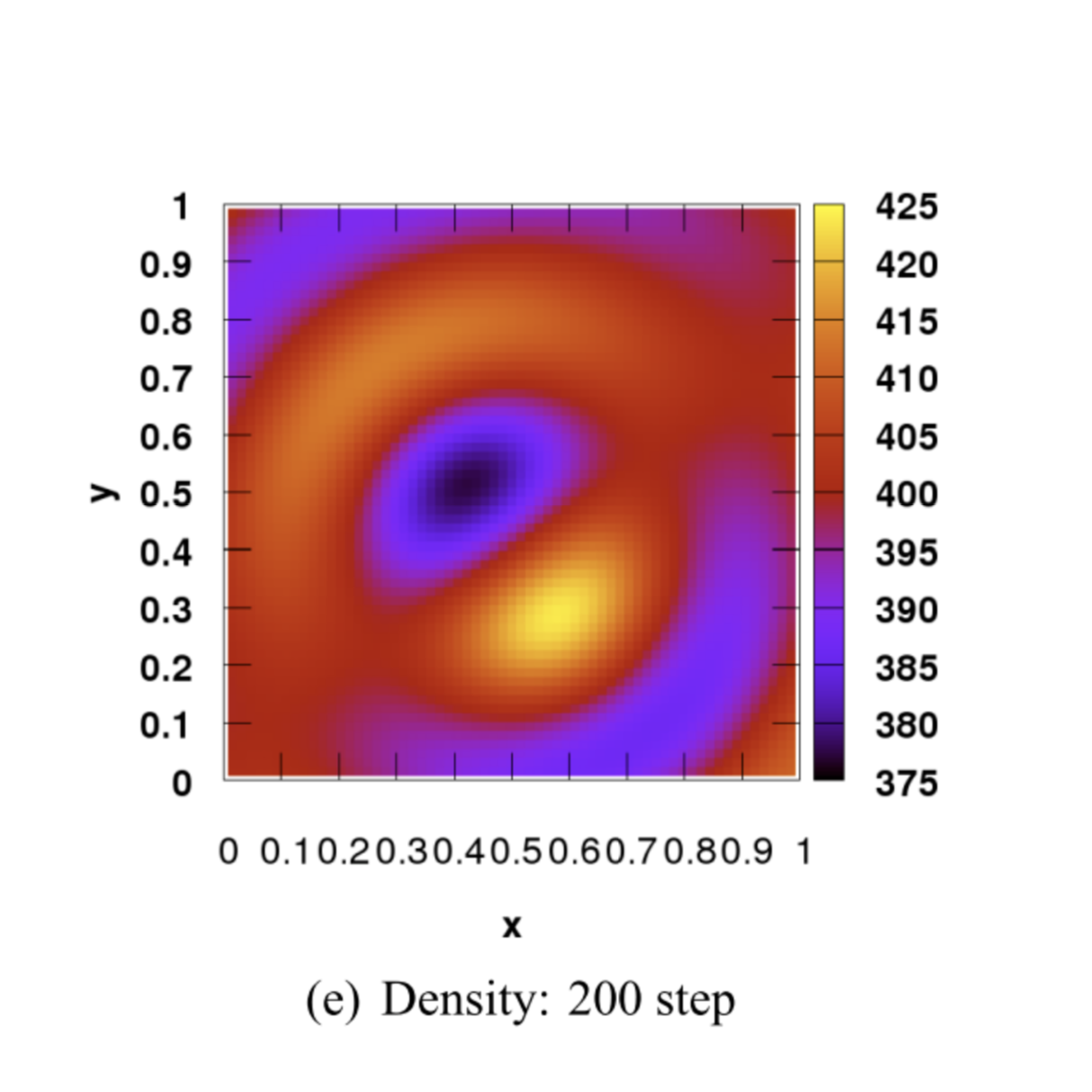
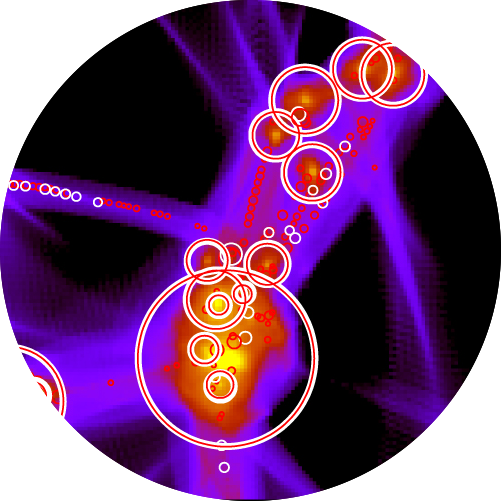
The Structure of the Universe with Quantum Wave Dark Matter (ψDM)
Sep 2014 – Jul 2015: My 1st Research ProjectψDM could be ultra-light scalar particles whose wavelength is astronomical. With completely different physics compared to the traditional cold dark matter (CMD), ψDM surprisingly predicts the similar structure of the universe on the large-scale. However, on the small-scale, the predicted structure is different from CDM's prediction. This potentially addresses the issues on the small scale of CDM. Click to see the journal paper [1].
Publications
[4]. Search for globular clusters associated with the Milky Way dwarf galaxies using GAIA DR2.
K-W. Huang, S. Koposov.
Submitted to Monthly Notices of the Royal Astronomical Society, May 2020.
[3]. The early growth of supermassive black holes in cosmological hydrodynamic simulations with constrained Gaussian realizations.
K-W. Huang, Y. Ni, Y. Feng, T. Di Matteo.
Monthly Notices of the Royal Astronomical Society, vol. 496, no. 1, pp. 1–12, Jul 2020.
[2]. BlueTides simulation: establishing black hole-galaxy relations at high-redshift.
K-W. Huang, T. Di Matteo, A. K Bhowmick, Y. Feng, C-P. Ma.
Monthly Notices of the Royal Astronomical Society, vol. 478, no. 4, pp. 5063–5073, Aug 2018.
[1]. Contrasting Galaxy Formation from Quantum Wave Dark Matter, ψDM, with ΛCDM, using Planck and Hubble Data.
H-Y. Schive, T. Chiueh, T. Broadhurst, K-W. Huang.
The Astrophysical Journal, vol. 818, no. 1, pp. 89, Feb 2016.